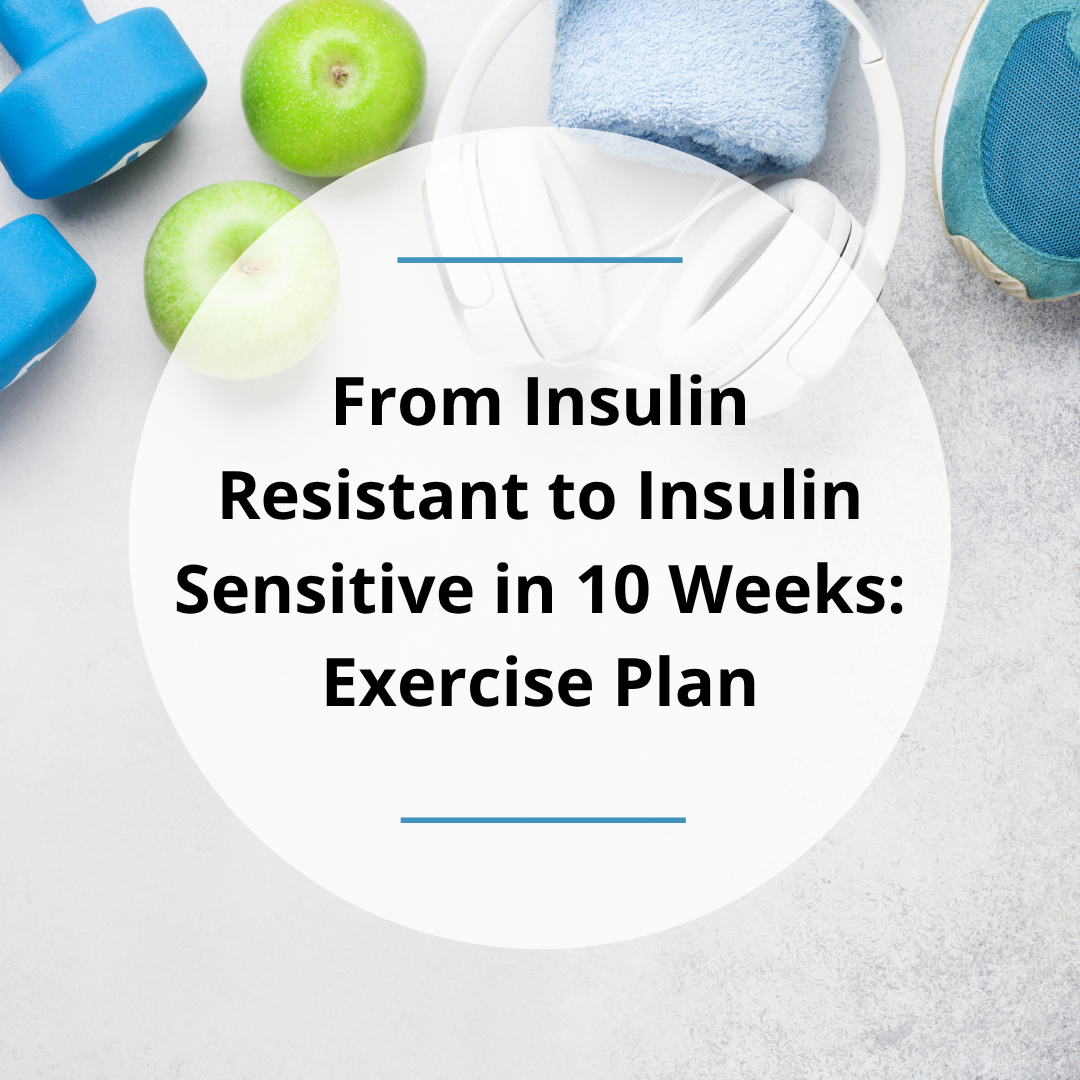
From Insulin Resistant to Insulin Sensitive in 10 Weeks – Exercise Plan
Download | Video | Exercise Intensity | The Training Schedule | Bare-Bones Alternate Routine
Combining aerobic exercise with resistance training is effective for improving insulin sensitivity because each targets different mechanisms. Aerobic exercise enhances glucose uptake by the muscles, lowering blood sugar levels with little or no need for insulin. Resistance training builds muscle mass, which increases the body’s capacity to store and use glucose.
This blog post provides a 10-week insulin resistance to insulin sensitivity training plan that you can download and start today, regardless of your fitness level.
Download the Training Schedule
Insulin Resistant to Insulin Sensitive in 10 weeks
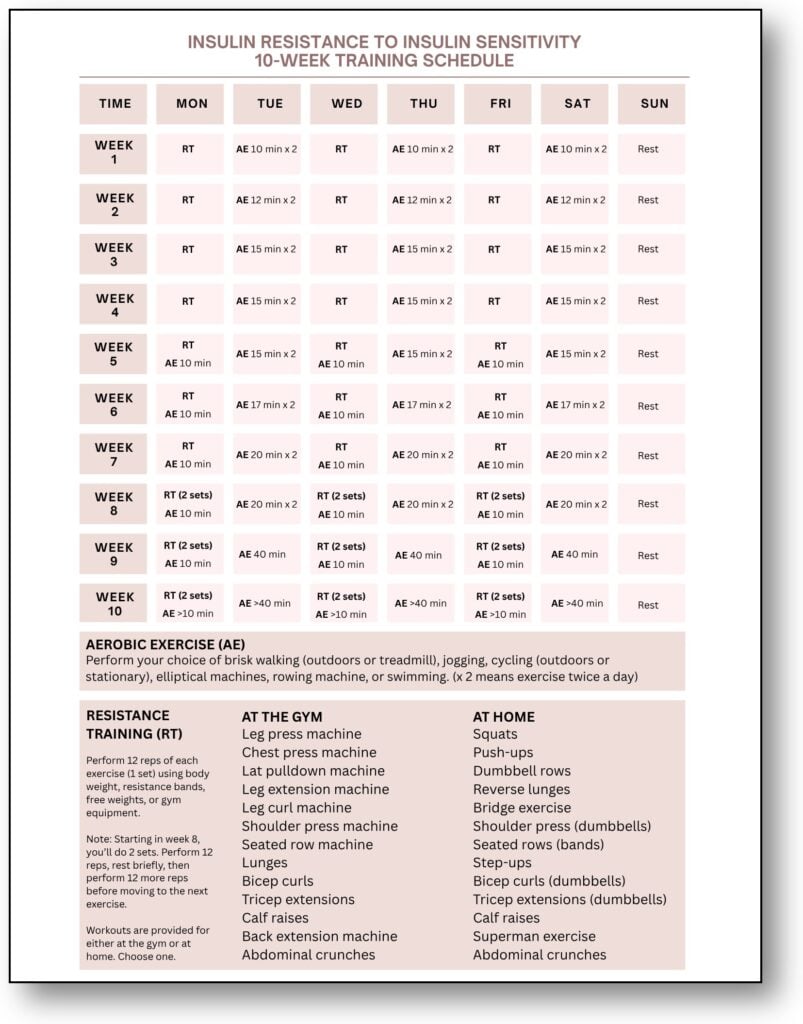
Before starting a new exercise program, check with your doctor.
Insulin Sensitivity Exercise Plan At-A-Glance
- A combination of aerobic exercise and resistance training improves insulin sensitivity.
- Aerobic exercise enhances muscle glucose uptake for several hours after the activity. Therefore, breaking aerobic exercise into multiple short daily sessions can help maintain insulin sensitivity.
- Resistance training helps your body respond to insulin and get glucose into your muscles. Perform resistance training three days a week to allow for recovery and repair.
From Insulin Resistant to Insulin Sensitive in 10 Weeks – Exercise Plan [Video]
In this video, you’ll learn…
- The optimal exercise intensity level for moving from insulin resistance to sensitivity.
- A 10-week training schedule that combines both aerobic and resistance exercises.
- A simplified alternate training schedule with examples!
Exercise Intensity
To move from insulin resistance to sensitivity, you’ll want to perform moderate-intensity exercise.
That may sound daunting, but keep in mind that you are the one who rates how intense an exercise is based on your current fitness level, so you are in control, and the exercises will grow with you as your fitness level improves.
Rating Aerobic Intensity
To rate intensity when exercising aerobically (e.g., walking briskly, jogging, rowing, cycling, swimming), you’ll pay attention to your breathing and your comfort level with speaking.
Using the Perceived Exertion Scale below, if levels 6 and 7 are true, you are exercising at a moderate intensity level, and you notice that while you are able to speak, you have difficulty holding a conversation.
For instance, at level 6, you feel a bit short of breath and find it hard to speak in full sentences. At level 7, you can only say a few words before taking a breath.
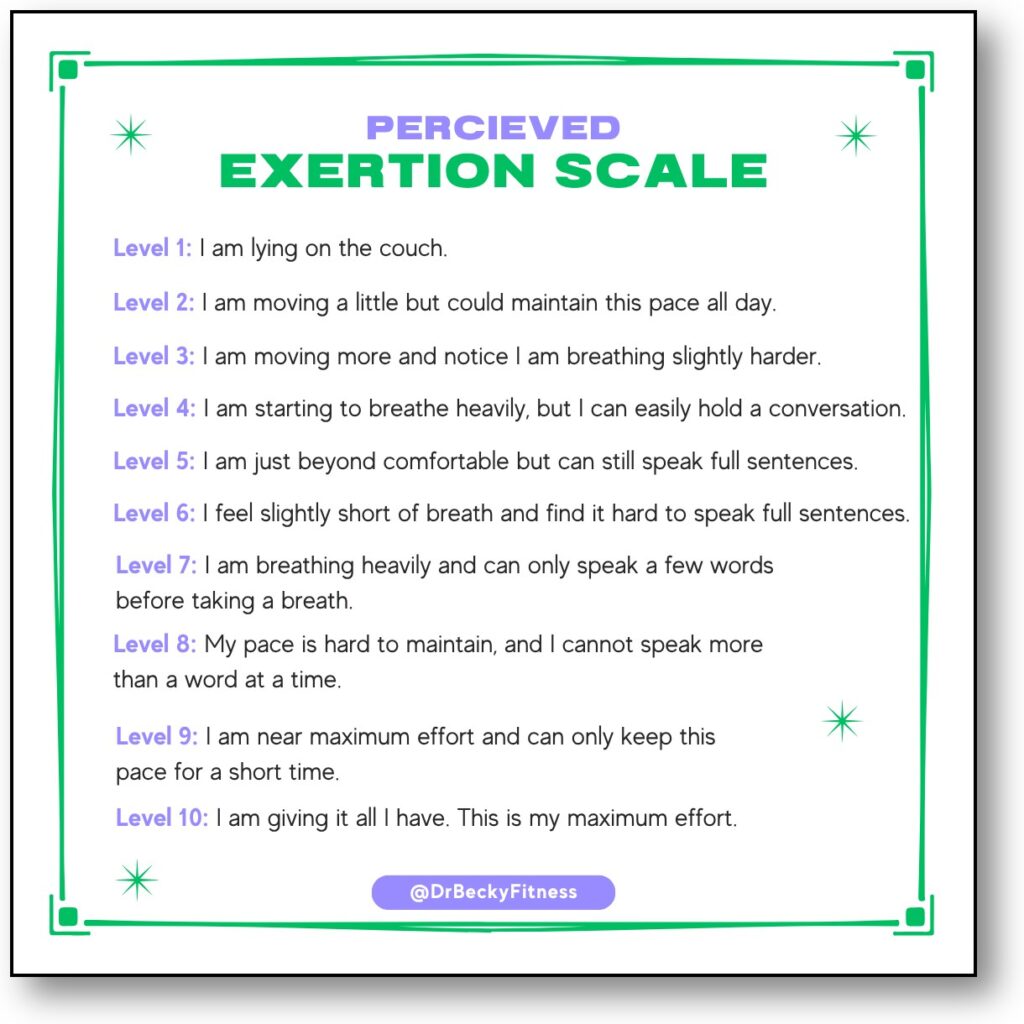
Rating Resistance Training Intensity
Finding your intensity level for resistance exercises will take some trial and error. Start with bodyweight only or light to moderate weights that you can safely lift or push for one set of 12 repetitions, with your muscles feeling challenged to complete the last few reps.
You can move up in weights and sets as your strength improves, but pay attention to pain. If you have sharp or shooting pain, stop doing that exercise.
The Training Schedule
Based on the paper “Exercise Programming for Insulin Resistance” from the NSCA’s Strength and Conditioning Journal, I put together a 10-week training schedule to move you from insulin resistance to insulin sensitivity. You can download the training schedule at the top of this blog post.
The Training Schedule Overview
During the 10-week program, you will perform both aerobic exercises and resistance exercises.
Aerobic Exercise
After aerobic exercise, your muscles get a beneficial boost in glucose uptake that lasts for several hours. Therefore, breaking aerobic exercise into multiple short sessions throughout the day can help maintain insulin sensitivity. You also want to increase your exercise volume as the weeks go on.
Therefore, for the first weeks, you’ll engage in multiple 10 to 15-minute aerobic exercise sessions on the days you are not exercising against resistance.
As your fitness level improves, you’ll switch to more frequent and longer aerobic exercise sessions, aiming to accumulate 150 minutes or more per week of moderate-intensity exercise.
The type of aerobic activity you choose is up to you. Examples include brisk walking or jogging, either outdoors or on a treadmill, cycling outdoors or on a stationary bike, using an elliptical or rowing machine, or swimming.
Resistance Training
Resistance training is highly effective at helping your body respond to insulin and get glucose into your muscles. But your body needs time between workouts for recovery and repair.
Therefore, you will perform resistance training three days a week for the entire program. Each session will be a full-body workout that includes exercises that hit all the major muscle groups.
The training schedule provides you with 13 resistance exercises to complete at each session. If you do not have access to a gym, the schedule includes a list of 13 at-home exercises along with a description of how to perform them.
In the first weeks, you’ll perform 12 repetitions of each exercise one time, which is one set.
In the final weeks, you’ll lengthen your training sessions by performing two sets of each exercise.
As your muscle strength increases, you’ll need to add resistance. Therefore, when you find that you can perform 12 reps of an exercise fairly easily, add weight if you are weight lifting or turn up the resistance on the gym equipment until the last 2 to 3 reps are hard to complete.
For resistance training, you can use your body weight, resistance bands, free weights, or gym equipment.
Bare-Bones Alternate Routine
The downloadable insulin resistance to insulin sensitivity training schedule guides you through 10 weeks of daily exercises.
However, I realize some of you want a simplified plan rather than download the schedule. Here is an alternate bare-bones workout routine.
Bare-Bones Insulin Sensitivity Workout Schedule
For the next 10 weeks, alternate between resistance and aerobic training days, taking one day off a week for rest.
Example:
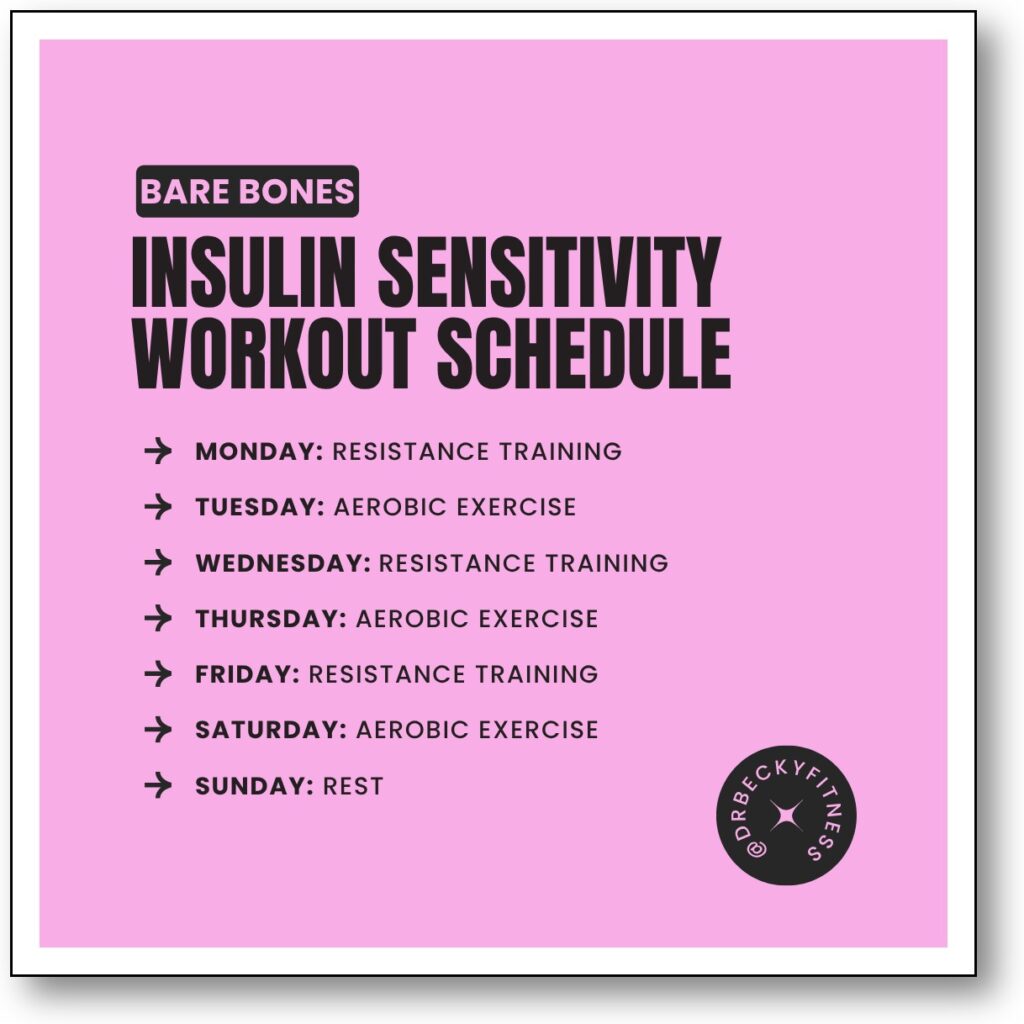
Bare-bones Aerobic Exercise Routine
On aerobic exercise days, walk, jog, or use cardio machines at the gym.
In week one, you’ll perform 15 minutes of aerobic exercise three times a week. Then, you will add 5 minutes weekly, building up to three 60-minute exercise sessions in week 10.
Example:
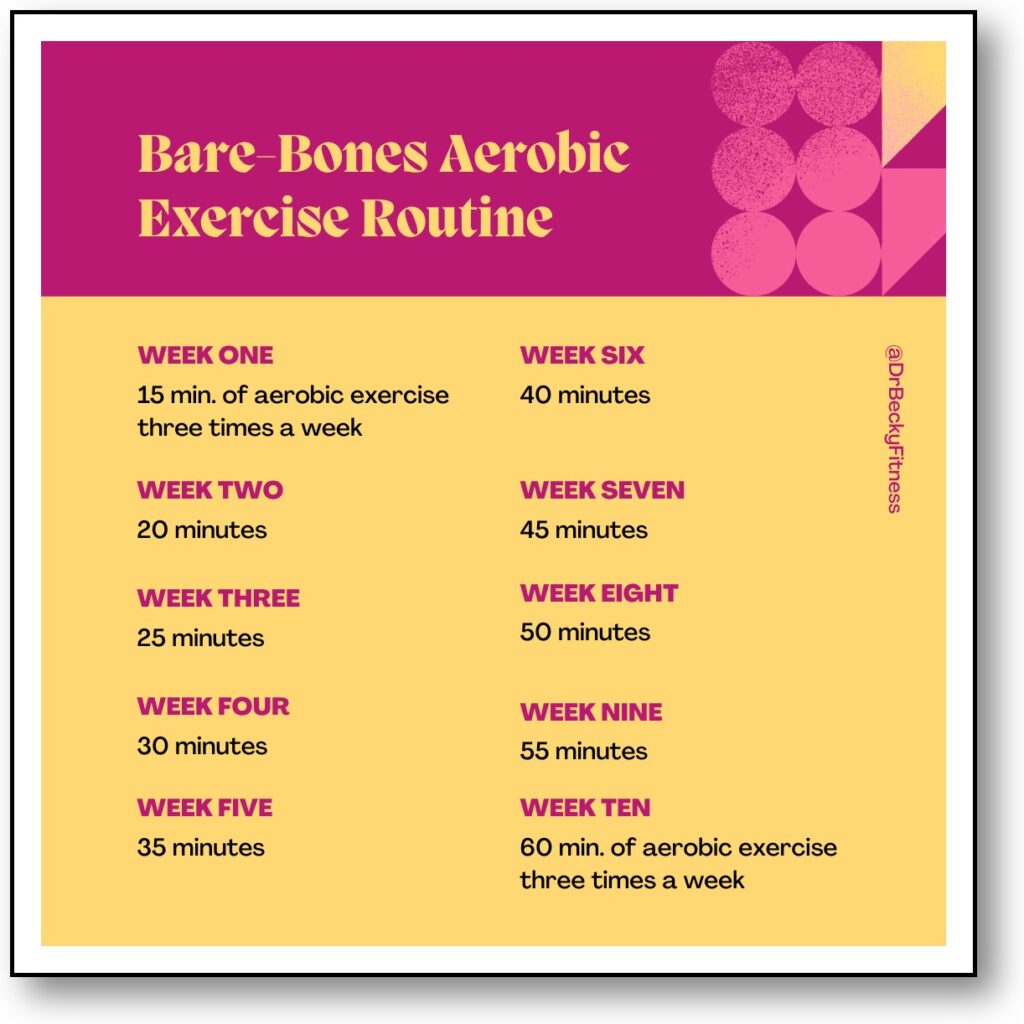
You can break aerobic exercise into multiple short daily sessions.
Bare-bones Resistance Training Routine
On resistance training days, you’ll work four major muscle groups. Specifically, you will work your back, chest, lower body, and abdomen.
You work your back by pulling, your chest by pushing, your lower body by squatting, and your abdomen with crunches.
Those movements can be done at home with nothing more than a resistance band and body weight exercises.
You can start by pulling against a resistance band in a rowing motion for 12 reps, then do 12 push-ups, 12 bodyweight squats, and 12 abdominal crunches.
Example:
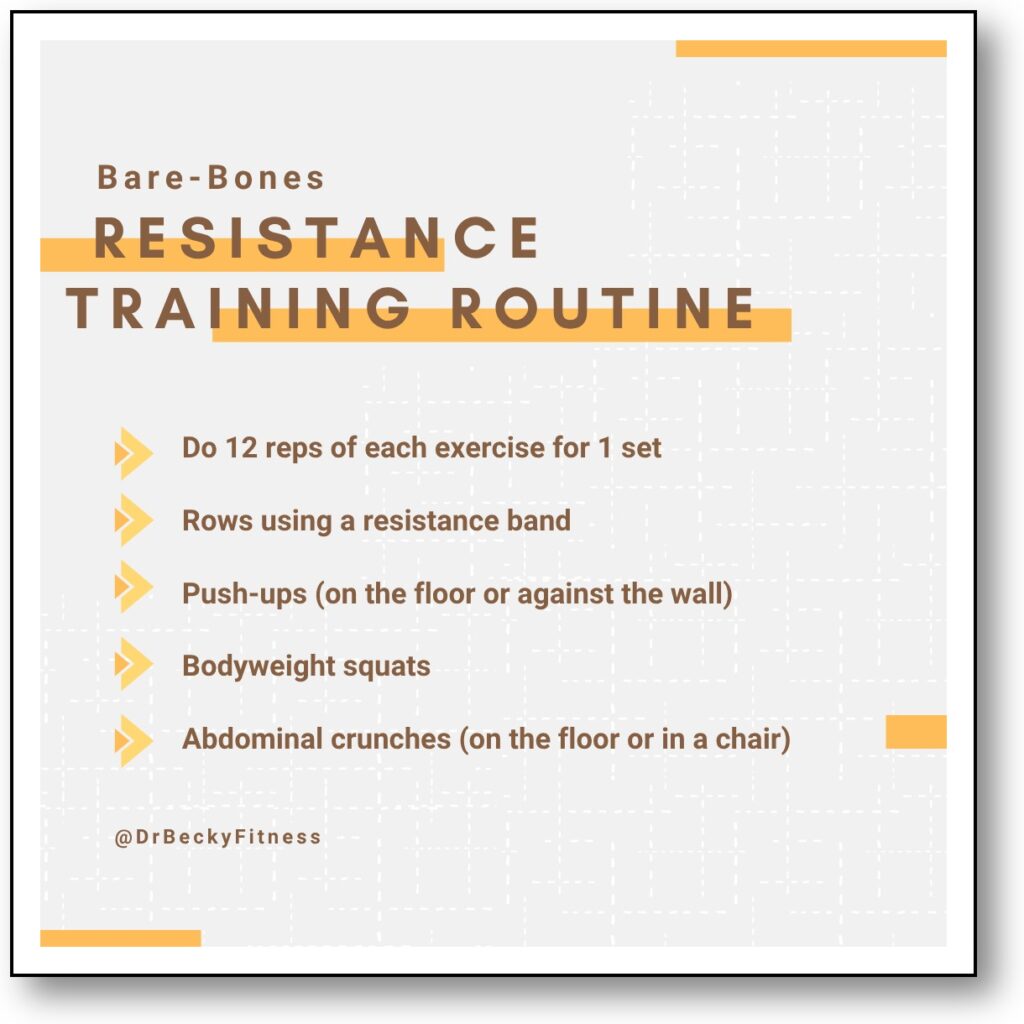
As you feel stronger, increase your resistance or add a second set, performing each exercise two times.
Takeaway
The goal of this training schedule is to improve insulin sensitivity. The sustained movement of aerobic activity combined with the muscle contractions of resistance training will accomplish that goal.
This exercise routine can grow with you, regardless of your starting point. For instance, you may find that 10 minutes of walking or even marching in place is taxing at the beginning, but stick with it, and you will see your body responding and progressing quickly.
About the Author
Becky Gillaspy, DC, is the author of The Intermittent Fasting Guide and Cookbook and Zero Sugar / One Month. She graduated Summa Cum Laude with research honors from Palmer College of Chiropractic in 1991.



